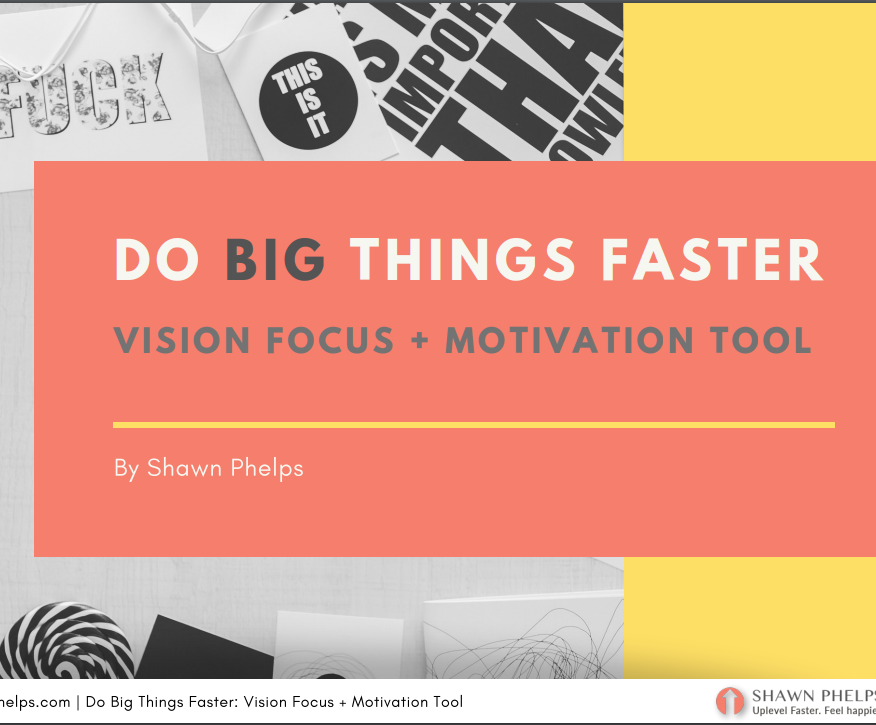Yes, there are 10 steps. Keep reading. It’ll be worth it.
First, here’s a secret I learned while working for a national business magazine, editing some of the country’s top business writers. Ready?
Everyone’s first drafts suck. Period. And knowing this just happens to be the cure for writer’s block. Also, that crappy first draft you’ve written? It’s part of a valuable process that will lead to something useful; you just need to keep going. Here’s how to turn it into great content.
(Confession: I often do a bunch of these at once and in a different order–but when you start out, it’s useful to go step-by-step.)
Step 1: Start with Two Questions
1. Why am I writing this? (What do I want to make happen?)
2. Who am I writing this for? (And what does that audience want/need most from me.)
Use your answers to shape your research, content, structure and tone.
Step 2: Do Some Research
Superstar tip: Go to the best source first. Let’s say you’re writing a press release. Don’t do a template search. Visit the website of a successful company and look at their press releases (e.g. BMW). If you’re trying to come up with awesome copywriting, learn from the world’s most award-winning copywriter: Tony Brignull. If you’re writing an article, check out magazines that feature great writing, like Esquire. Break down the structure used by the author to help you build your own story structure. The web is an expert database, friends. You don’t need to figure this stuff out by yourself. Also, don’t be afraid to call people and ask them questions or interview them.
Do too much research. It may not show up in your writing, but it will show up in the quality of what you write.
Step 3: Brainstorm
Start writing down your key themes/ideas. I recommend mindmapping and/or freewriting, so you don’t censor any ideas. Be outrageous. Write down everything that comes to mind. And if, instead, you make a boring bullet-point list, I’ll know and personally come over and whack you with my pen. Okay, maybe I won’t know. But you’ll know and I guarantee your ideas won’t be as good.
True story that may not surprise you. I once got myself in a barrel of trouble while facilitating a communications course at a big bank because of this. One participant had written each of her points in tiny, perfect print, all lined up. In fact, she put more time into neatness than coming up with ideas. I (gently, I thought) explained that this was a free-flowing, creative exercise, and she basically had an emotional meltdown. I felt terrible, and learned a valuable lesson that day: it’s best to allow people to grow at their own pace. But, here’s where this story is relevant to you: if you’re not used to allowing yourself to be creative, this may feel weird or uncomfortable for you. That’s okay. Give yourself the freedom to “draw outside the lines” or at least not line everything up perfectly when brainstorming. If you want to create great content, the creative side of your brain needs space to play.
Step 4: Plan
Okay, now pick the best ideas and make your nice, neat list (if that’s important to you. I’m a scribbler, myself). This should form your structure (which will likely change).
Step 5: Write
Now comes the time when you’ll finally write your first crappy draft. Go wild. As in the brainstorming phase, this is a place to let your mind say whatever it wants, without restriction. Forget about writing that great opening sentence (professional writers usually do that last) and don’t bother with perfect sentences either. Absolutely do not try to use a “writerly” voice—write exactly the way you talk. I call this stage “brain dumping” because the idea is just to dump everything you’ve learned in your research and brainstorming down on the page. If you’re struggling, grab a digital recorder (most phones have them now) and talk it through, then write it down.
Step 6: Rewrite
After you’ve put your first draft aside for a while, move happily on to your second draft. Make sure you’ve answered all the questions your reader might have. Add specifics–names, numbers, studies–when relevant. Always keep your writing goal(s) in mind. Ask yourself: is this content going to do what I want it to do? If not, brainstorm to figure out what else it needs.
Step 7: Rewrite it again
Seriously. If you have time (or if your copy is important) move on to a third and fourth. Most magazine articles in national magazines go through multiple rewrites/edits. I wrote 10 completely restructured drafts of my book before I published it. There are no shortcuts to personal excellence, though sometimes deadlines force good work to be good enough.
Step 8: Edit for Structure
Finally, my favourite step. This is where the fun begins. Look at what you’ve written like a puzzle to be solved. Play with sections; move them around. If relevant, use subheadings liberally to help guide your reader through the content. As long as you’re not writing a story-based article, don’t be afraid to include lists. People don’t have time to read anymore—they skim. So make it easy for them, as I have for you (with this layout).
Step 9: Edit for Content
Now is the time to cut, cut, cut. Cut out all the boring, self-indulgent stuff you thought was cute or funny. Cut all the jargon and long words you thought would make your company sound smart. Cut wherever you sense repetition. Be ruthless—imagine someone else wrote it and you are editing it for them. But, don’t cut out your personality. Be yourself. Your writing should sound natural. A good test is to read it out loud.
If you want great content, you can never fall in love with what you’ve written; it can always be better. To learn how to rock at writing and editing, read William Zinsser’s “On Writing Well” once a year. This book is required reading in most journalism programs, and was the main book I used when I taught magazine writing to college students. Here’s an awesome wiki summary. Stephen King’s “On Writing” is a very close second.
Step 10: Edit for Grammar/Punctuation
Tiny mistakes can affect your credibility. I’m always amazed when I visit company web sites and discover ridiculous mistakes on their key pages or marketing copy (especially digital marketing agencies being hired to create content for others). If you’re creating important copy, get someone else to read it; they’ll likely catch what you missed. At the very least, put it aside for an hour (or a day) then come back and read it again. This grammar guide (click on “Hypergrammar” in the top menu for a drop down menu) by the University of Ottawa is pretty awesome.
This is obviously a very general guide, but I promise it’s exceedingly helpful if you actually use it. I plan to post a few specific writing guides for different marketing/branding vehicles in the future.
*This article was born as a lesson for my college magazine writing class (with many more steps). Next, it was shortened into a Lunch and Learn presentation I delivered at a software development company. Now, I’ve restructured it again for you (and I edited this version a few times as well). Who knows when I may use it again?
Time invested into writing great content is never wasted. You’ll always find other ways to use it.



